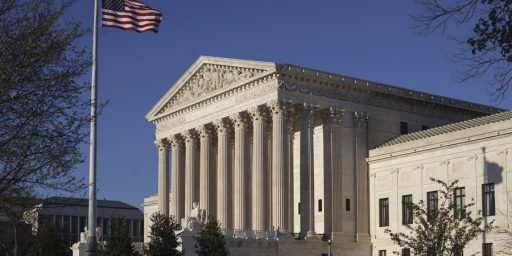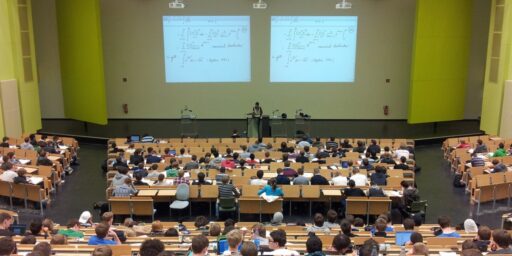Texas A&M Best School in US
Via Kevin Drum, I see that the liberal Washington Monthly magazine has put out its rankings [WARNING: PDF] of the best colleges and universities in the country and, unlike the older U.S. News list, theirs is dominated by public schools, with Texas A&M ranking 1st, a full twenty-six slots ahead of Harvard and seventy-seven ahead of Princeton, which has lately dominated the U.S. News list.
Why the disparity? In an essay entitled, “The Tyranny of Prestige,” editor Paul Glastris explains,
Remember, we aren’t trying, as U.S. News does, to rate how selective or academically prestigious a given school is, but rather how much it contributes to the common good. The whole point is to recognize the broader role colleges and universities play in our national life and to reward those institutions that best fulfill that role. After all, almost every major challenge America now faces—from stagnant wages to the lack of fluent Arab speakers in the federal government—could be met in part by better harnessing the power of our colleges and universities.
So instead of measuring, say, the average SAT scores of incoming freshmen, or the percentage of alumni who donate money, we rank colleges based on three criteria: social mobility, research, and service. In other words, is the school recruiting and graduating low-income students? Is it producing PhDs and cutting-edge research? And is it encouraging in its students an ethic of service?
Glastris fully admits that his measurement is not perfect, observing that information he’d like to include — say, how much students actually learn and how many graduates go on to teach school and the like — just isn’t available.
While this list is not threat to replace the U.S. News version any time soon — prestige and networking effects are things parents and kids look at when selecting schools, after all — it’s an interesting heuristic for spurring debate.
Even if we accept Glastris’ premise for the role of universities, it’s debatable as to how well his list captures it. TAMU gets a huge boost because of its sizable Corps of Cadets, for example and large schools in general get rewarded by metrics like “PhDs awarded” which are based on raw numbers. Curiously, too, schools are penalized for having lower than predicted graduation rates. Since the elite schools have high predictions (indeed, several are somehow supposed to graduate 2 percent more students than they take in!) they lose sensitivity points when some drop out. (Thus, MIT would get penalized for students who quit school to devote full time to a multi-million-dollar-a-year tech company they started as freshmen.) These flaws are exacerbated by treating all factors equally.






Gig ’em!
…too bad it’s a PDF…did you know PDF’s really suck???
As the father of four boys of college age, I suspect my best guide to colleges (to avoid) may be the Princeton Review’s list of Best Party Schools. If you want your kid to get an education, don’t send him to West Virginia.
The alma mater of Michael Vick.
Coincidence?
Vick went to Virginia Tech.
Gig ‘Em, Ags.
The last criterion on which anyone should be awarding prestige to universities is the number of unemployable-anywhere-but-Starbucks PhDs they can churn out. I dare say A&M’s English and history PhDs place out at a much lower rate than Harvard’s.
And I expect approximately zero Washington Monthly readers will send their kids to A&M in preference to Harvard, making this an even more egregious “better for thee, but not for me” exercise than most that come out of the liberal pantheon.
Obviously if people had the choice of going to Harvard over Texas A&M they would (although it would be a tough choice for me [whoop!]), and both ranking systems leave much to be desired, but it’s nice to see an alternative out there. Maybe the best idea would be to average the two scores and see which school comes out on top.
oh well… Gig ’em Aggies!
Having a BS in Aerospace Engineering from a state university with over 30 years of experience, and having worked with many graduates of elite and prestigious universities, I have found them to be very bright and great at theory. I would not however hire them to design a commercial product or a user interface for a computer program. In fact, the best digital design engineer (solved a problem for Intel), the best electro-mechanical design engineer (designed a cell base station that exceeded earthquake, heat, cold, and sand storm requirements that cost half as much as COTS equipment), and the best mechanical engineer (designed a production line that doubled productivity and saved the jobs of 500 people) I’ve ever worked with, did not even have degrees.
I would like to see a rating by employers. Which schools have graduates that can earn their pay within six months? Those are the universities where I want to do my recruiting. Any university that can make you ready to earn your pay within six months of graduation while also preparing you for an advanced degree, is going to be a tough school with a very full curriculum. But you will always be able to find a job.